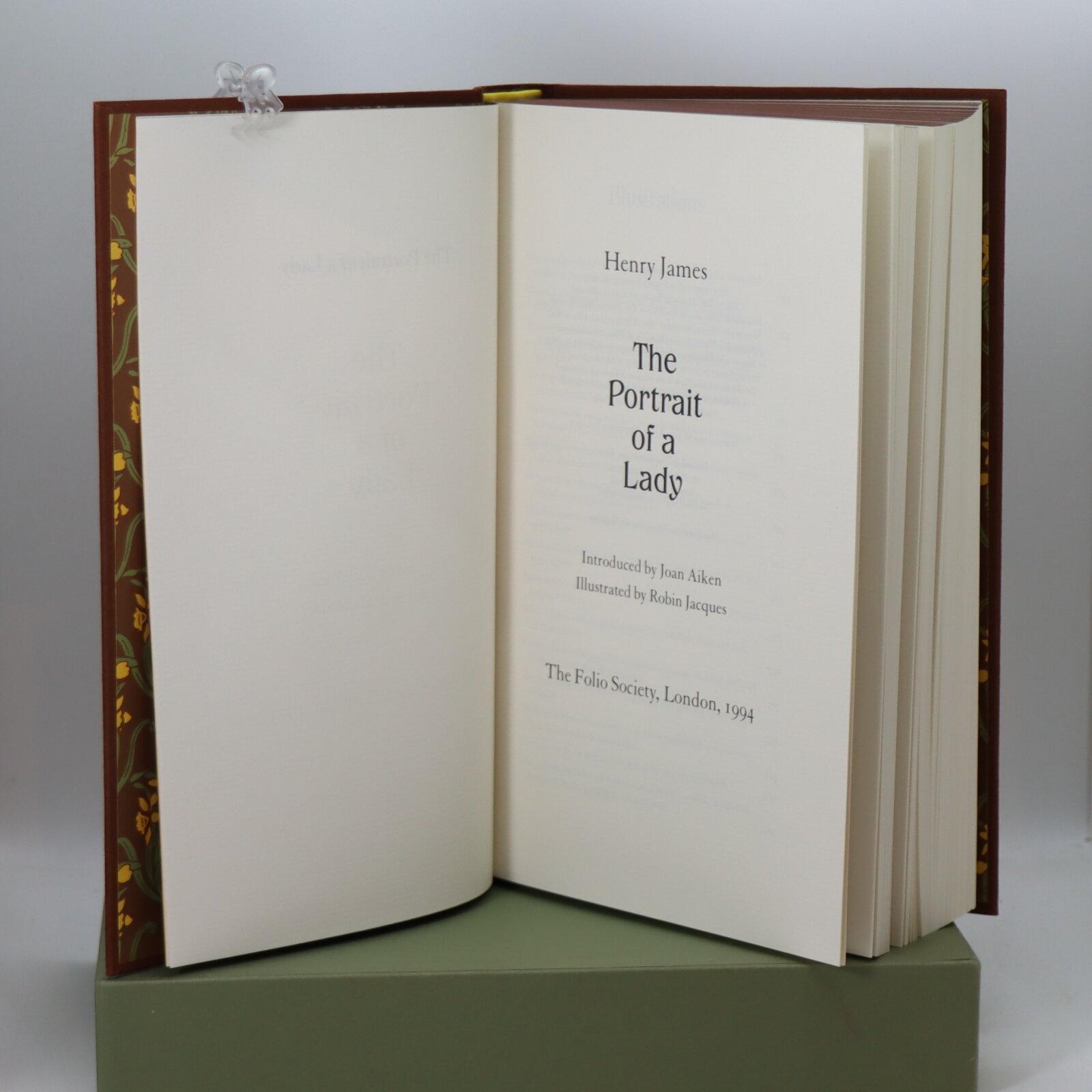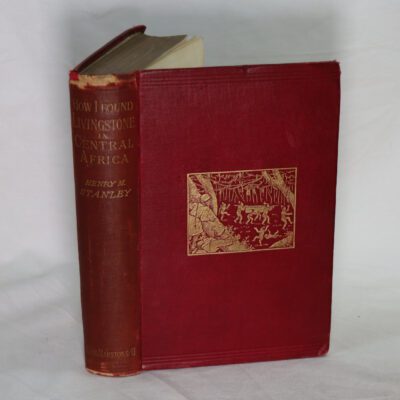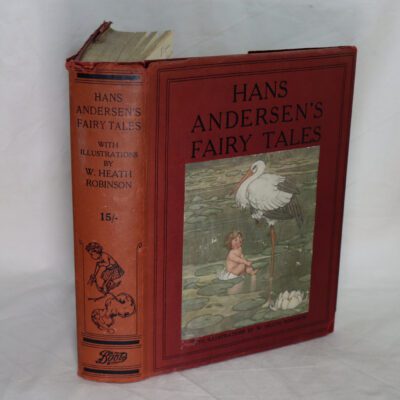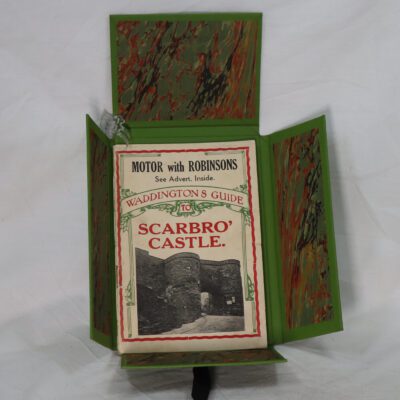The Portrait of a Lady.
Printed: 1994
Publisher: Folio Society. London
| Dimensions | 17 × 26 × 4.5 cm |
|---|---|
| Language |
Language: English
Size (cminches): 17 x 26 x 4.5
Condition: Fine (See explanation of ratings)
Item information
Description
In a fitted box. Brown cloth binding with gilt title on the spine. A bunch of daffodils on the front board.
It is the intent of F.B.A. to provide an in-depth photographic presentation of this book offered so to almost stimulate your feel and touch on the book. If requested, more traditional book descriptions are immediately available.
The Portrait of a Lady is a novel by Henry James, first published as a serial in The Atlantic Monthly and Macmillan’s Magazine in 1880–81 and then as a book in 1881. It is one of James’s most popular novels and is regarded by critics as one of his finest.
The Portrait of a Lady is the story of a spirited young American woman, Isabel Archer, who, “affronting her destiny,” finds it overwhelming. She inherits a large amount of money and subsequently becomes the victim of Machiavellian scheming by two American expatriates. Like many of James’s novels, it is set in Europe, mostly England and Italy. Generally regarded as the masterpiece of James’s early period, this novel reflects James’s continuing interest in the differences between the New World and the Old, often to the detriment of the former. It also treats in a profound way the themes of personal freedom, responsibility, and betrayal.
Henry James OM (15 April 1843 – 28 February 1916) was an American-British author. He is regarded as a key transitional figure between literary realism and literary modernism, and is considered by many to be among the greatest novelists in the English language. He was the son of Henry James Sr. and the brother of philosopher and psychologist William James and diarist Alice James.
He is best known for his novels dealing with the social and marital interplay between émigré Americans, English people, and continental Europeans. Examples of such novels include The Portrait of a Lady, The Ambassadors, and The Wings of the Dove. His later works were increasingly experimental. In describing the internal states of mind and social dynamics of his characters, James often made use of a style in which ambiguous or contradictory motives and impressions were overlaid or juxtaposed in the discussion of a character’s psyche. For their unique ambiguity, as well as for other aspects of their composition, his late works have been compared to impressionist painting.
His novella The Turn of the Screw has garnered a reputation as the most analysed and ambiguous ghost story in the English language, and remains his most widely adapted work in other media. He also wrote a number of other highly regarded ghost stories, and is considered one of the greatest masters of the field.
James published articles and books of criticism, travel, biography, autobiography, and plays. Born in the United States, James largely relocated to Europe as a young man, and eventually settled in England, becoming a British citizen in 1915, a year before his death. James was nominated for the Nobel Prize in Literature in 1911, 1912, and 1916
Want to know more about this item?

Related products
Share this Page with a friend












